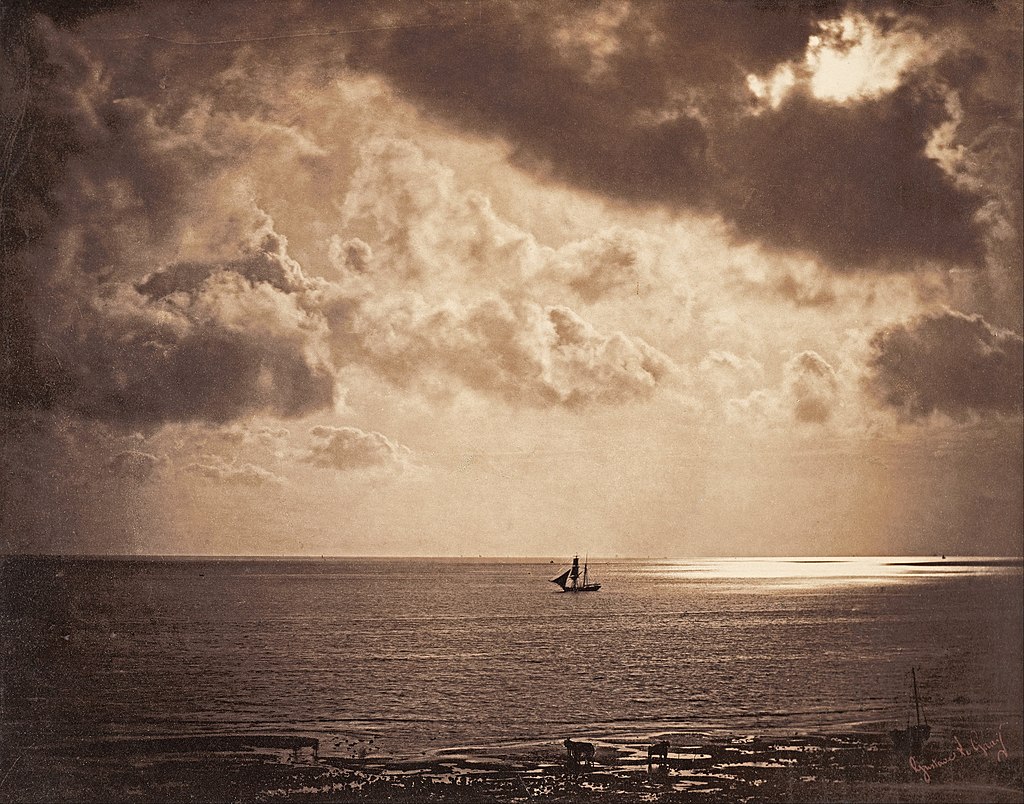
Occasionally, someone will look at my images and ask, “Are these Photoshopped?” I take this to mean, how much has the image been manipulated. I often answer that I use Photoshop and Adobe Camera Raw to process my images and leave it at that. Part of using Photoshop in post-processing may be to combine two or three images where I may have shot one for the correct exposure in the sky and one for correct exposure on the land and then combine them in layers for one correct exposure. This isn’t new, manipulating images is as old as photography.
In the 1850s French photographer Gustave Le Gray (who contributed several inventions to the field of photography), created the technique of layering. He grew frustrated having to choose between the land and the sky in an image, which often meant leaving the sky pure white and overexposed. So, 170 years ago he solved this problem by creating the process of layering, or “combination printing” as he defined it at the time. He frequently used this technique with his seascapes by creating two separate negatives: one correct exposure for the land and one for the sky. Then he would combine the two negatives in the darkroom to create one image. Sound familiar? Sometimes he’d take images at different times of the day or even from different places. He might use a calm sea image from the Mediterranean and combine it with a stormy sky shot from the Normandy coast. The critics at the time lauded him for his image’s depth and tonal range of light and shadow.
Today, chatter abounds on social media about dropping in a sky or using multiple exposures in a shot, and some purists are adamantly against doing this. But like all art, photography is an expression of the individual photographer, and photographers have been manipulating images since the invention of the craft. Using the tools of an art allow us to expand and evolve our own work and the art itself. And these techniques aren’t new—and we owe the development of many of them to the creativity of photographers like Gustave Le Gray.
“You May Think It’s New, but it’s Not” will be a series I’ll be providing in upcoming Photo Cascadia blogs, so look for it in future posts here.

Location: Mosier, Oregon
Website: www.dmcobbphoto.com
Facebook: www.Facebook.com/DavidMCobbPhotography
Twitter: www.twitter.com/dmcobbphoto
As a long-distance hiker, I have sharpened my photographic perspective over the years on the Pacific Crest Trail, the Continental Divide, the Canadian Divide and most recently walking across Iceland. My goal is to capture the wonders I see in nature for the enjoyment of all those with an eye for the extraordinary.

Recent Comments